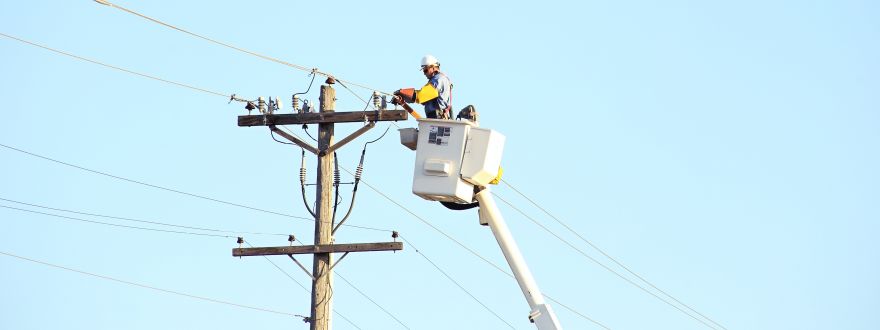
After all the rolling blackouts we've grown accustomed to during our annual "fire season," getting a generator is tempting. "With extreme weather events becoming more frequent, portable generators have become fairly common. Anyone who lives in a suburban area often hit with power outages after storms is familiar with the sound of dozens of generators humming throughout the neighborhood. But emergency power backup isn’t their only use. Portable generators are often used on construction sites, for tailgating and camping, and at barbecues and other events such as 5k runs, parades, fairs, or anyplace that can’t be reached by an extension cord or doesn't have access to outlets." (– Popular Mechanics)
Portable Generator Hazards
Portable generators are useful when temporary or remote electric power is needed, but they also can be hazardous. The primary hazards to avoid when using a generator are carbon monoxide (CO) poisoning from the toxic engine exhaust, electric shock or electrocution, fire and burns. Every year, people die in incidents related to portable generator use. Most of the incidents associated with portable generators reported to CPSC involve CO poisoning from generators used indoors or in partially-enclosed spaces.
Carbon Monoxide Hazards
When used in a confined space, generators can produce high levels of CO within minutes. When you use a portable generator, remember that you cannot see or smell CO. Even if you do not smell exhaust fumes, you may still be exposed to CO. Danger labels are required on all portable generators manufactured or imported on or after May 14, 2007. If you start to feel sick, dizzy, or weak while using a generator, get to fresh air RIGHT AWAY. DO NOT DELAY. The CO from generators can rapidly kill you. Follow these safety tips to protect against CO poisoning. • NEVER use a generator inside homes, garages, crawlspaces, sheds, or similar areas, even when using fans or opening doors and windows for ventilation. Deadly levels of carbon monoxide can quickly build up in these areas and can linger for hours, even after the generator has shut off. • Follow the instructions that come with your generator. Locate the unit outdoors and far from doors, windows, and vents that could allow CO to come indoors. • Install battery-operated CO alarms or plug-in CO alarms with battery back-up in your home, according to the manufacturer’s instructions. CO alarms should be certified to the requirements of the latest safety standards (UL 2034, IAS 6-96, or CSA 6.19.01). Test batteries monthly.
Electrical Hazards
• Generators pose a risk of shock and electrocution, especially if they are operated in wet conditions. If you must use a generator when it is wet outside, protect the generator from moisture to help avoid the shock/electrocution hazard, but do so without operating the generator indoors or near openings to any building that can be occupied in order to help avoid the CO hazard. Operate the generator under an open, canopy-like structure on a dry surface where water cannot reach it or puddle or drain under it. Dry your hands, if wet, before touching the generator.
• Connect appliances to the generator using heavy-duty extension cords that are specifically designed for outdoor use. Make sure the wattage rating for each cord exceeds the total wattage of all appliances connected to it. Use extension cords that are long enough to allow the generator to be placed outdoors and far away from windows, doors and vents to the home or to other structures that could be occupied. Check that the entire length of each cord is free of cuts or tears and that the plug has all three prongs. Protect the cord from getting pinched or crushed if it passes through a window or doorway.
• NEVER try to power the house wiring by plugging the generator into a wall outlet, a practice known as “backfeeding.” This is extremely dangerous and presents an electrocution risk to utility workers and neighbors served by the same utility transformer. It also bypasses some of the built-in household circuit protection devices.
Fire Hazards
• Never store fuel for your generator in the home. Gasoline, propane, kerosene, and other flammable liquids should be stored outside of living areas in properly-labeled, non-glass safety containers. Do not store them near a fuel-burning appliance, such as a natural gas water heater in a garage.
• Before refueling the generator, turn it off and let it cool down. Gasoline spilled on hot engine parts could ignite.
Source: US Consumer Product Safety Comission





